The month began not with digging but with some intense and productive museum time, specifically the Museum of London, disappointing because little on show and the labeling dimly lit and almost unreadable, the British Museum, impressive but limited because only the best is on display, and the V&A, astonishing! I had never visited their glass and ceramics galleries before, I think perhaps they were closed due to staff shortages on my previous visit. Anyway they have a great arrangement whereby their whole collection is organised on open glass sided shelves within a series of enclosures so everything is visible plus there is an arrangement to have any pieces of special interest removed to an adjacent handling room where they can be examined more closely. I will be back.
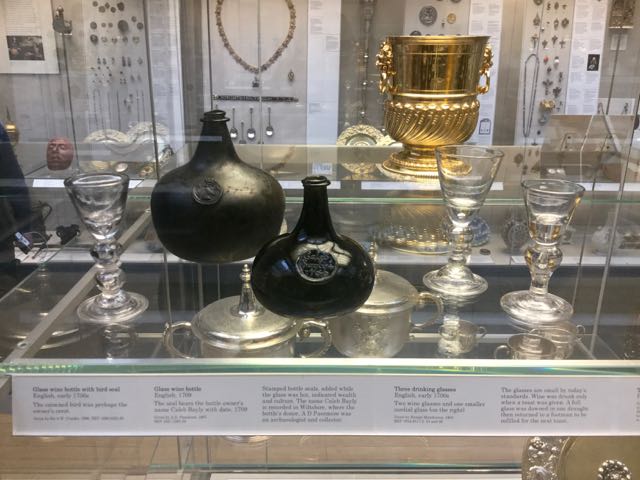
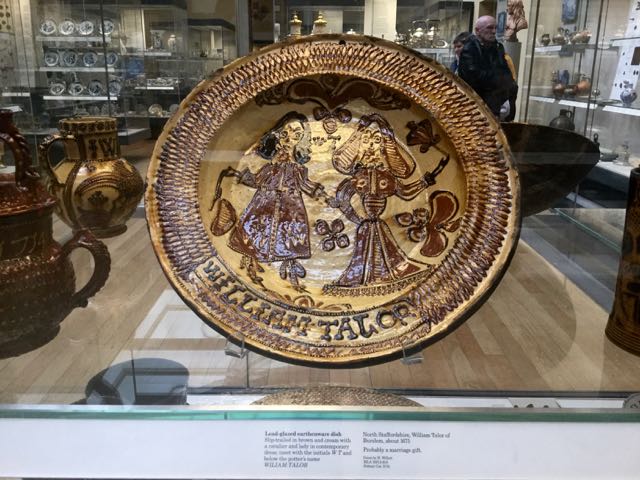
In the British Museum: bottles and wine glasses with a rather vulgar wine cooler in the background... imagine finding one of those plus a spectacular slipware dish.
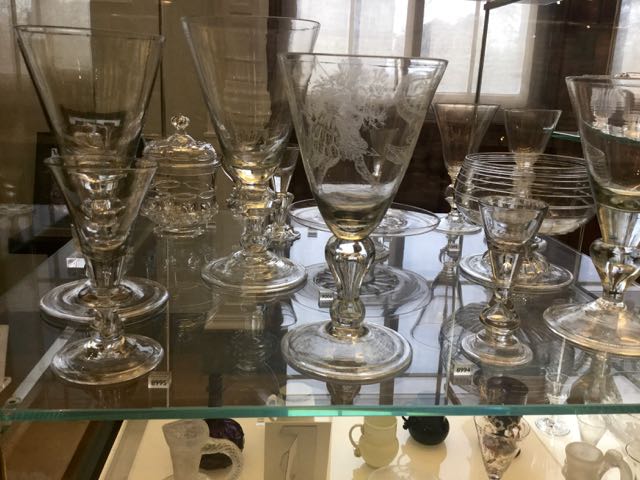
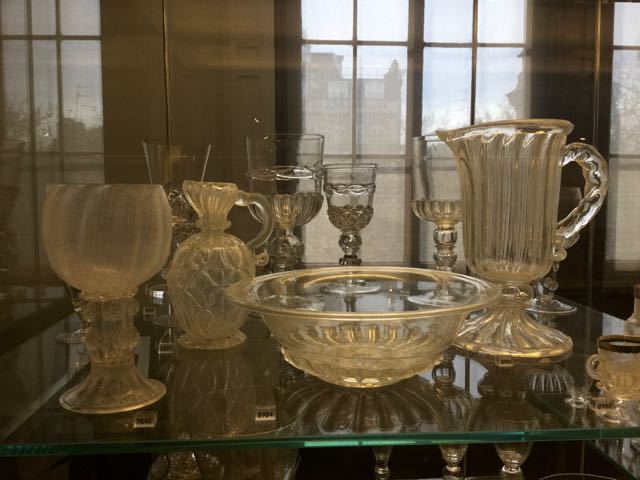
The V&A, a selection of George Ravenscroft glasses and bowls some are crizzled, see below
It was in the V&A that I first got to grips with the key point in English glass making when George Ravenscroft in the 1670s made the transition to lead crystal. His early efforts were disappointing because of crizzling - a new word for me too - the development of many small cracks resulting in a milky white finish. I don't normally copy from Wikipedia but here in outline is an intriguing connection with Plot, could this in some way be reflected in the glassware we are unearthing at Hanwell?
"At this point
the circumstances concerning Ravenscroft’s role in lead crystal
manufacture becomes less clear. This is partly because records from the
mid-17th century are incomplete, but is also largely because
Ravenscroft was secretive about his ingredients and processes. There is
proof that he was helped by Sir Robert Plot FRS, who suggested using
flints from Oxfordshire river beds in place of dark grey London flints
to the very expensive white flints from the river bed of the River Po
in Italy as used in Murano. It is now believed that Dr Plot requested a
sample of his powder which was described as being "fine and white". If
he added lead oxide (in a red lead powder form), the powder would
appear pale pink, so he may have deliberately have misled Dr Plot and
his assistant sent to visit in Henley on Thames. He was probably
careful to prevent competitors from copying him and also wished to
agree a deal with the Worshipful Company of Glass Sellers of London
Glass Sellers’ Company, to which he gave exclusive rights to buy his
creations at pre-determined prices in return for a grant to finance his
Henley-on-Thames workshop, with two teams of glass blowers."
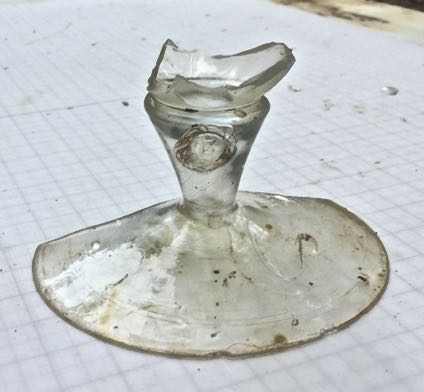
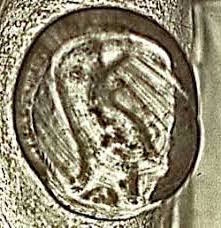
Here is the foot of the wine glass excavated last year and I'm pretty sure that it bears the Ravenscroft seal (enlarged view of another example on the right). This is important firstly because such vessels are very rare but secondly of it is both crizzled and stamped it may give us a very precise date of manufacture... more to follow on this.
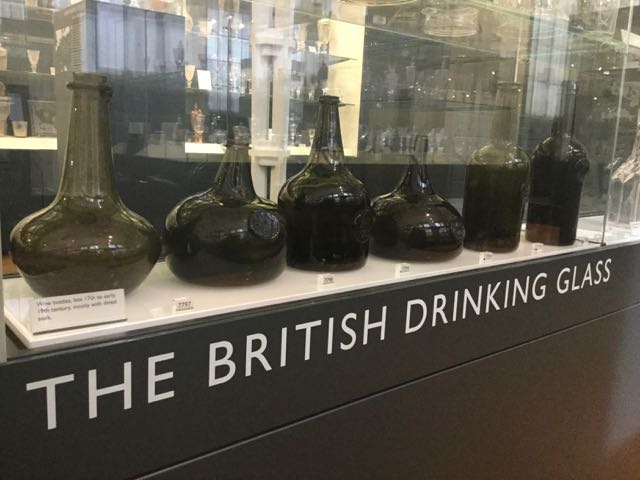
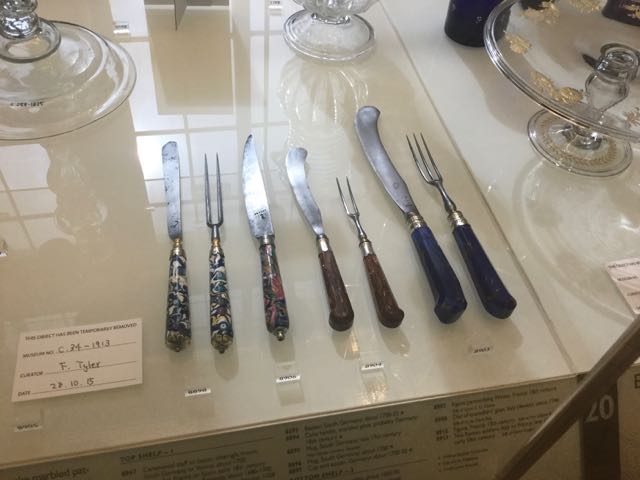
I was interested in their comparative wine bottle display but also in this glass handled cutlery from the period reminding us of Sir Anthony's knives and forks with polished stone handles.
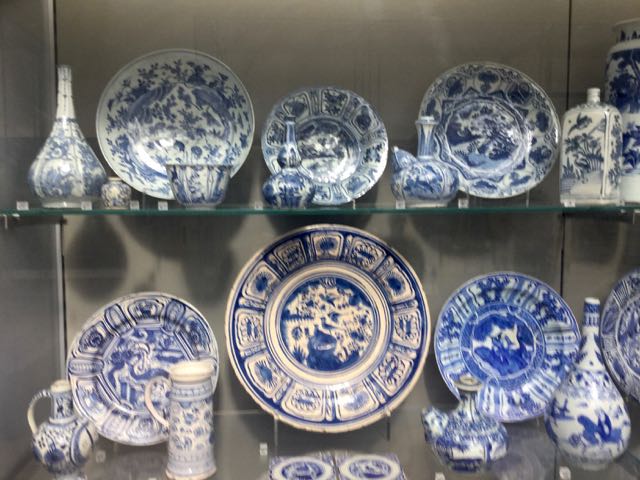
More useful displays, this time Chinese porcelain from the early seventeenth century above European tin-glazed copies from the same period
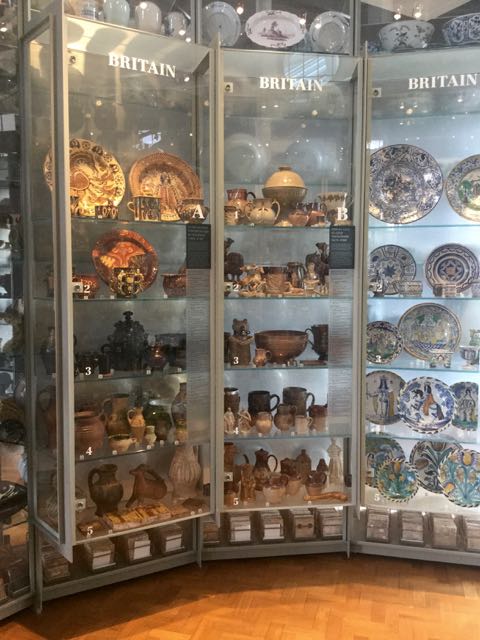
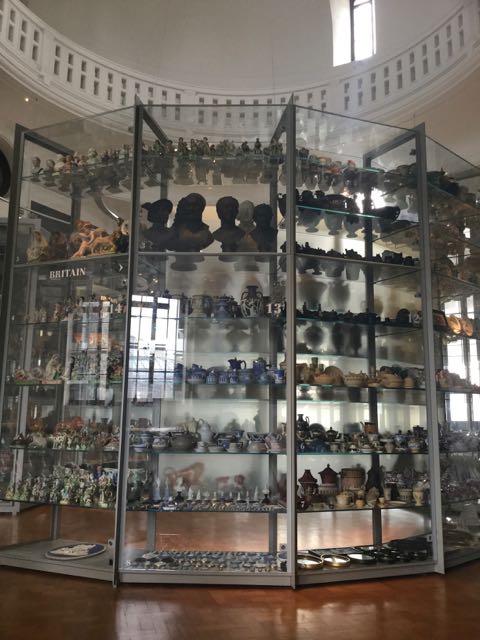
... and here we have the amazing reserve stock galleries where everything is on show in rotundas....
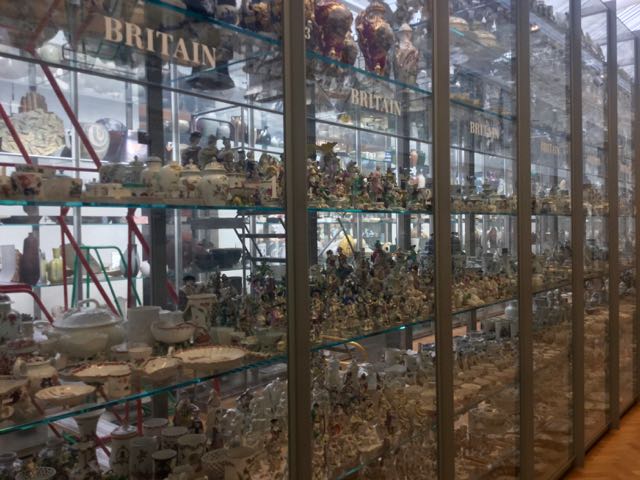
... and endless racks of shelving.
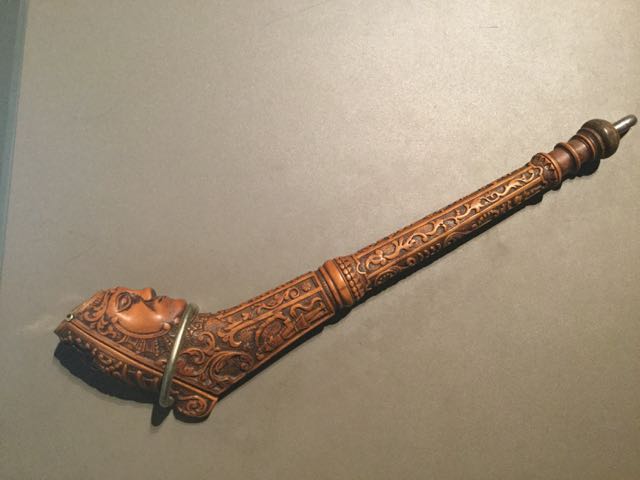
... and the final discovery of the visit to the V&A, something I had never seen before, I guess they are not terribly common survivors, a seventeenth century wooden pipe case within which one could place one's clay tobacco pipe and smoke it!
Once back from London the digging
resumed on the new southern extension whilst we continued to wait for
the waters to go down... with a little help from our pump. Thanks to
Ian and Peter P. for a lot of rather thankless dirt shifting. Another
plus was the return of the next two pot reconstructions from Peter S.'s
home laboratory.
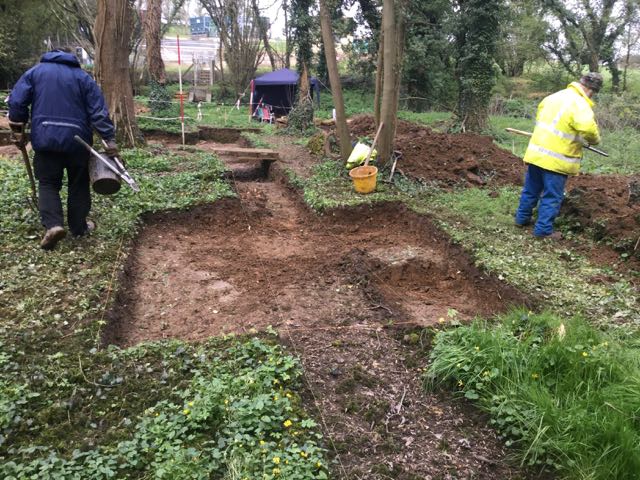
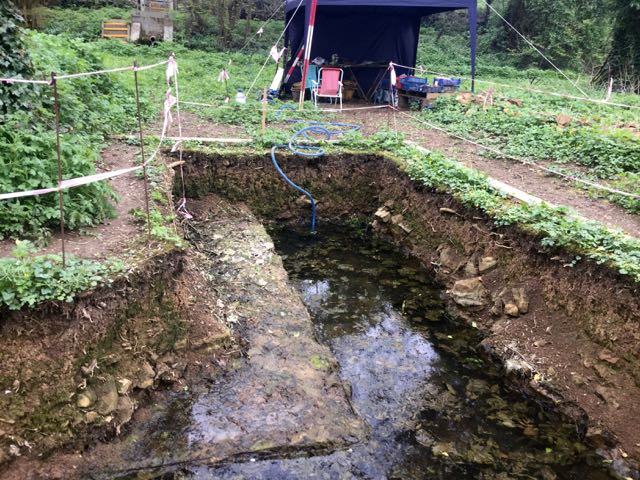
Ian and Peter P. turn their backs on the new extension, and who can blame them, as the pump labours on.
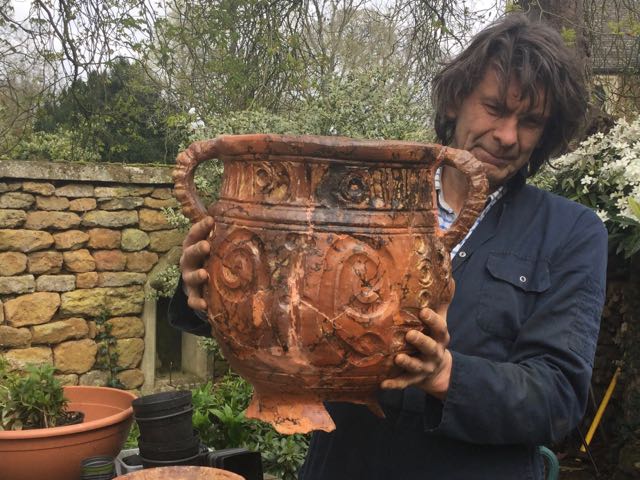
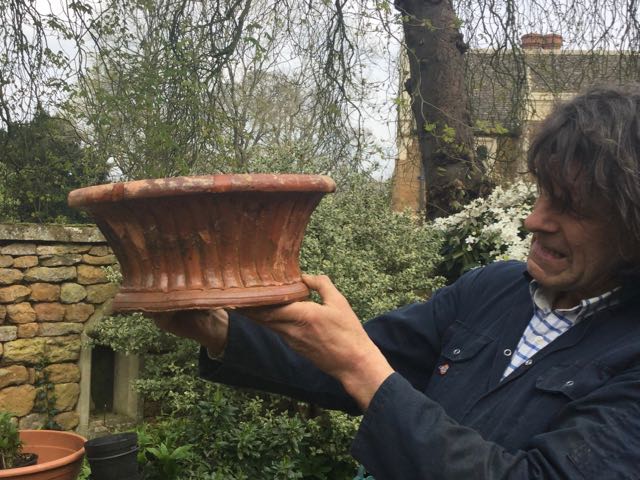
More amazing achievements from Peter S.'s wonderful workshop.
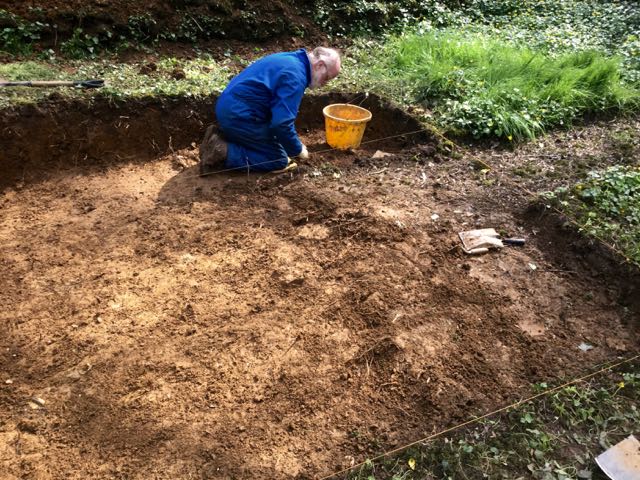
Ian starts work on uncovering a spread of rubble which may mark the line of the perimeter wall on the south side.
As the sunken areas refilled with water rather more deeply and rapidly than I had expected we continued to work on the new section of wall to the south. This meant troweling to expose the rubble core then examining the facing of the wall by taking out more silting from the moat until we came down onto the top of what I think of as the 'sea of rubble'. During the course of this we came across an unusually large worked piece of hard grey stone which turned into an intriguing find. The curved head of an arched opening or part of the circular surround for a small pool? Wait and see...
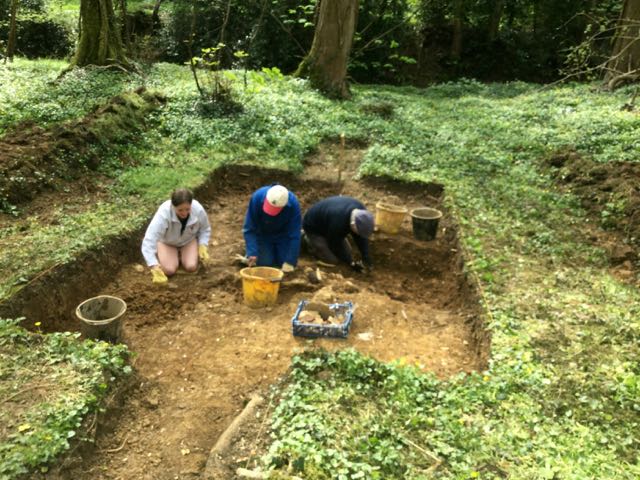
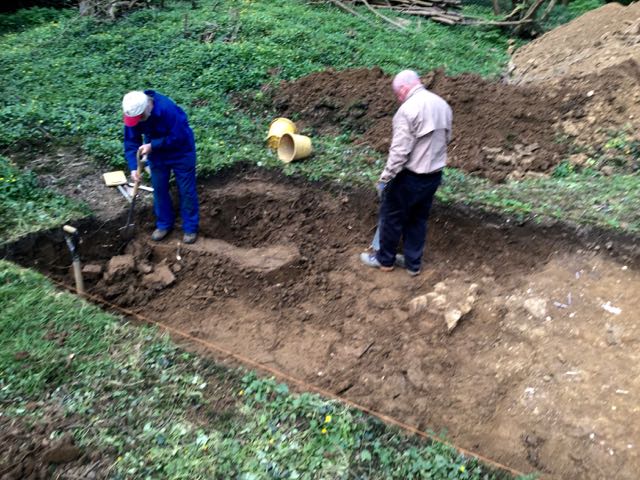
Work on the wall with Abigail, Ian and Peter P. The next day an early start of shifting a couple of tonnes of dirt before....
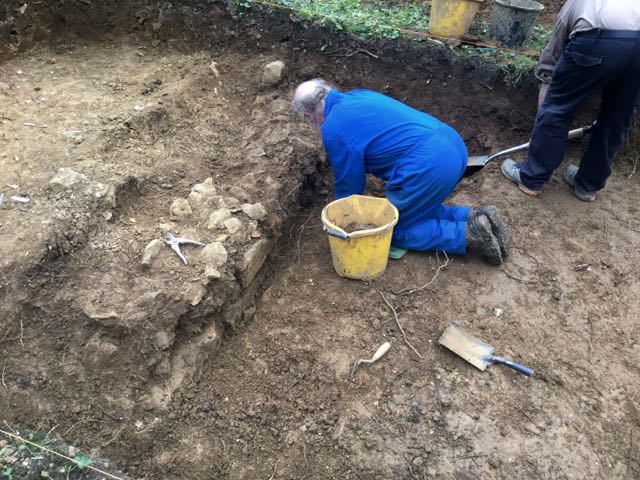
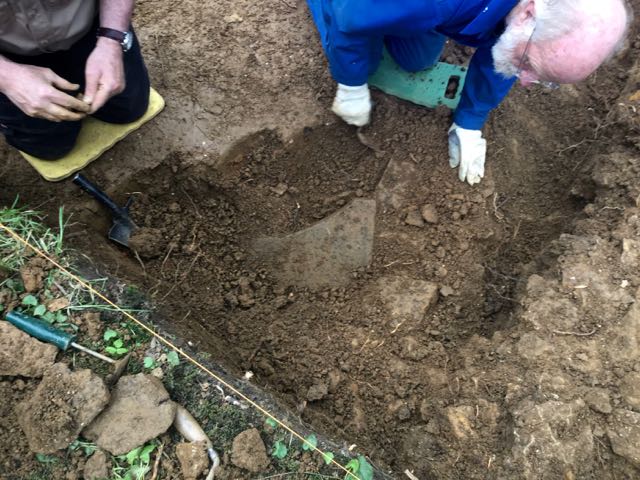
... returning to excavate by hand to reveal the face of the wall plus a strange looking stone emerges.
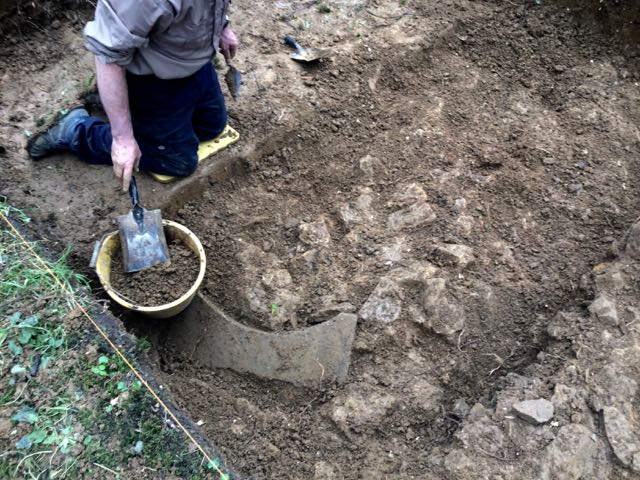
And here it is. It definitely has a curve.
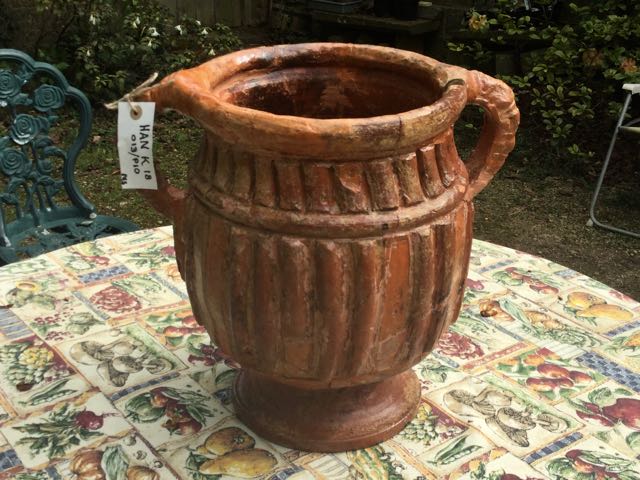
Another pot comes home to Hanwell thanks to Peter S.


Ian and Peter P. turn their backs on the new extension, and who can blame them, as the pump labours on.


More amazing achievements from Peter S.'s wonderful workshop.

Ian starts work on uncovering a spread of rubble which may mark the line of the perimeter wall on the south side.
The weather continued fine
through to a magnificently sunny Easter weekend with a terrific tea at
Hanwell on Good Friday. Leading up to that work had continued on the
southern extension with the first facing stone of the perimeter wall
appearing. Also as the weather stayed dry I was able to completely pump
out the northern and north western sectors and shovel away loads of
rotten leaves and sticky mud. This meant the whole area including the
stones which had been under water over winter could be polished up.
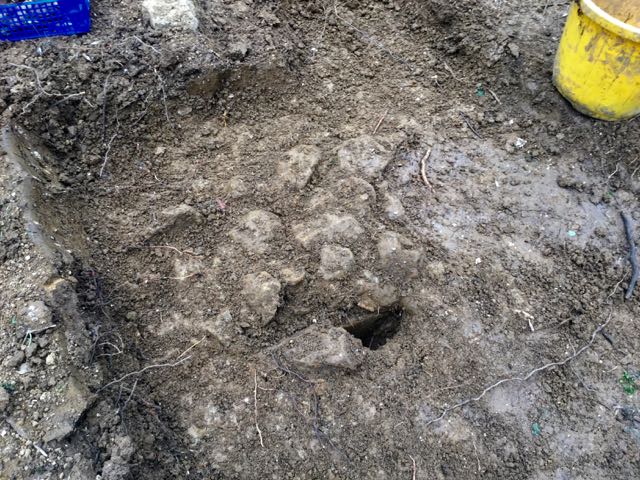

Ian makes a break through as a void appears above what looks to be one of the facing stones and Peter S. explores the newly extended area for signals for buried metalwork to watch out for.
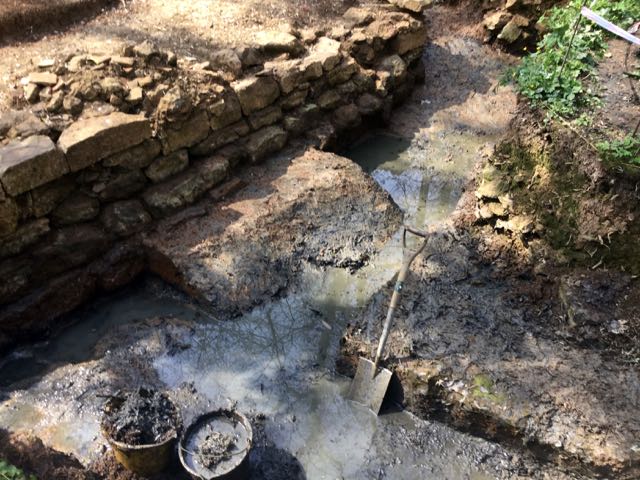
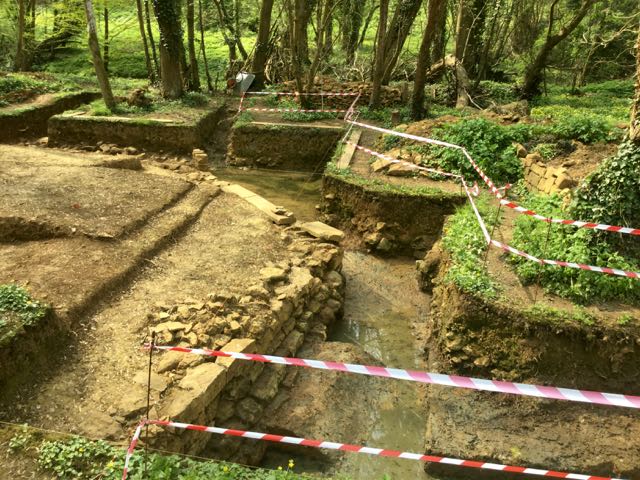
Part way through shoveling the sludge away with the finished result... looking good enough to eat... well maybe not.
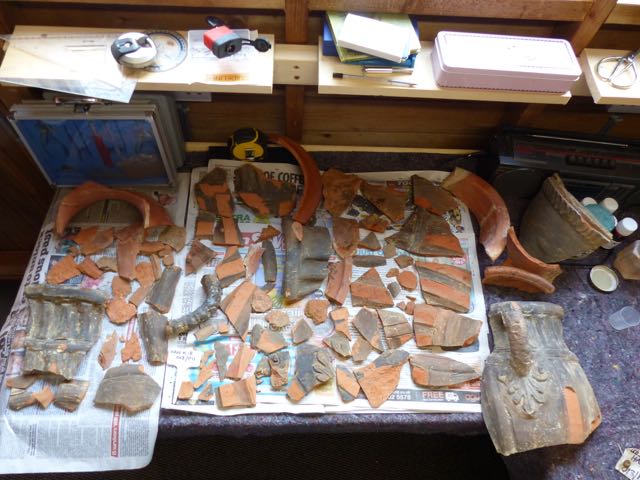
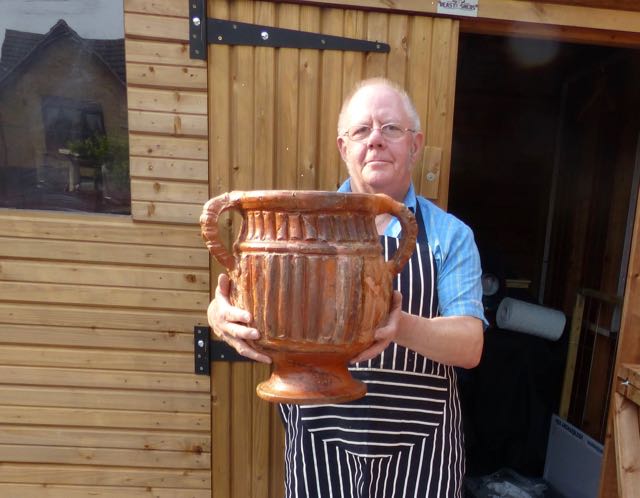
Not quite a before and after: pot 10 in pieces and pot 11 held aloft by a justifiably proud Peter S.


Ian makes a break through as a void appears above what looks to be one of the facing stones and Peter S. explores the newly extended area for signals for buried metalwork to watch out for.


Part way through shoveling the sludge away with the finished result... looking good enough to eat... well maybe not.


Not quite a before and after: pot 10 in pieces and pot 11 held aloft by a justifiably proud Peter S.
As the sunken areas refilled with water rather more deeply and rapidly than I had expected we continued to work on the new section of wall to the south. This meant troweling to expose the rubble core then examining the facing of the wall by taking out more silting from the moat until we came down onto the top of what I think of as the 'sea of rubble'. During the course of this we came across an unusually large worked piece of hard grey stone which turned into an intriguing find. The curved head of an arched opening or part of the circular surround for a small pool? Wait and see...


Work on the wall with Abigail, Ian and Peter P. The next day an early start of shifting a couple of tonnes of dirt before....


... returning to excavate by hand to reveal the face of the wall plus a strange looking stone emerges.

And here it is. It definitely has a curve.

Another pot comes home to Hanwell thanks to Peter S.